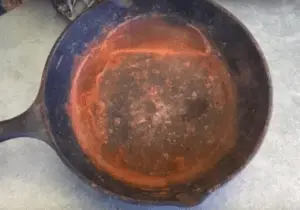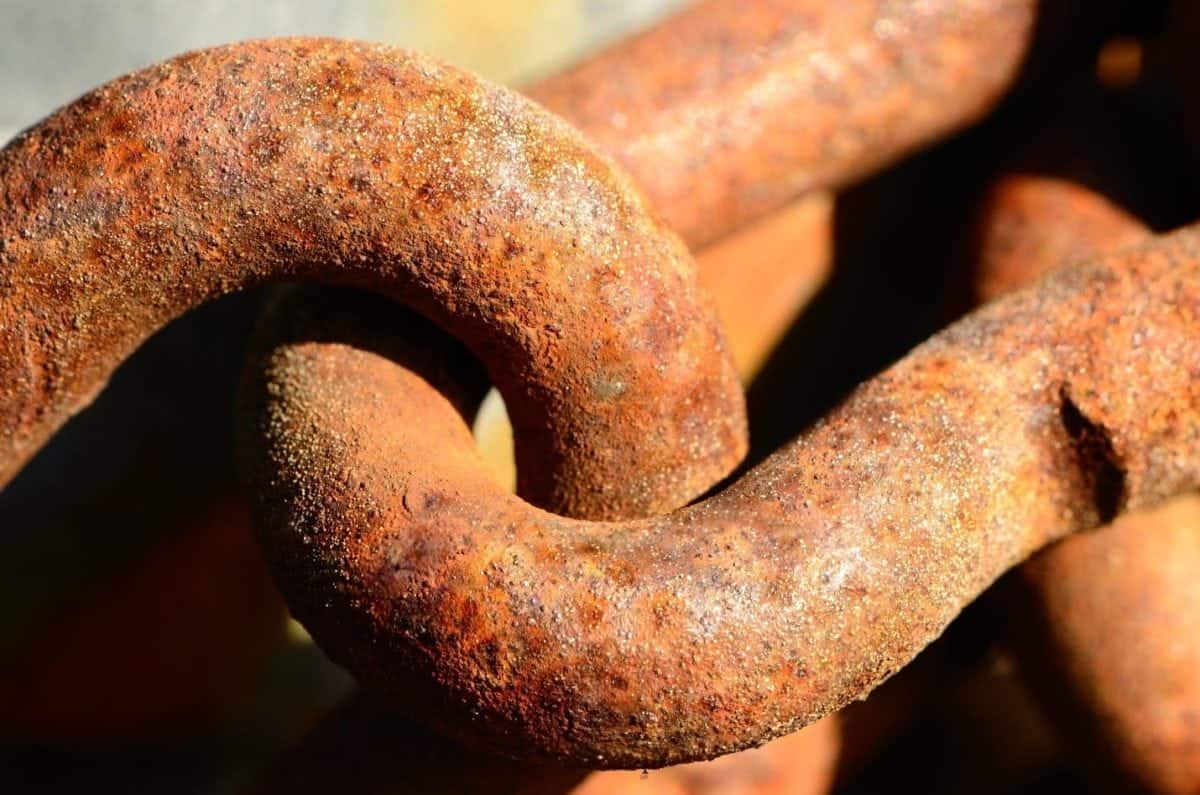You can also substitute lemon juice for white vinegar, which is especially helpful if the stain has been present for a while. Start by sprinkling the stain with the salt, then fully cover it with lemon juice. Allow the rust remover to sit for about ten minutes. Use a clean white towel to blot the stain. Using toothpaste for the removal of rust stains is definitely a good idea. Apply the paste on the stain and let it sit for around 10 minutes. Then, wash it clean with the help of clean water. You can also use baking soda along with the toothpaste for even better results.
Don’t let rust run rampant in your house. Fight the intrusive tarnish with these surefire methods, and your countertops and appliances will soon glisten once again.

Photo: istockphoto.com
At its best, a kitchen furnished with shiny stainless steel appliances and surfaces is practically the picture of pristine and professional. But when the thick, seemingly impenetrable metal making up your kitchen sink, counters, and pots and pans begins to rust, the expensive aesthetic looks worse than if actually damaged.
Homeowners dealing with these blemishes may ask, Isn’t stainless steel supposed to be, well, stainless? Though its name is somewhat misleading, any appliance made up of the chromium-based metal can easily corrode if not properly cared for. Luckily, there’s no need to panic!
If you’re one of the many who have accidentally left utensils or frying pans soaking in the kitchen sink longer than you care to admit, don’t throw in the towel on removing unsightly surface stains just yet. In fact, the solutions—yes, there are a few—are so simple that they’re probably staring you right in the face if you happen to be in the kitchen.
Read on for how to remove rust from stainless steel all throughout the kitchen and home.
Photo: istockphoto.com
METHOD 1: Simply Baking Soda
MATERIALS AND TOOLS Available on Amazon
– Baking soda
– Water
– Soft cloth
– Soft bristle brush
– Paper towels

For small rust spots…

STEP 1:
When removing only a few unseemly spots from the side of a pan or the front of your dishwasher, mix a paste from 1 tablespoon of baking soda and 2 cups of water. (For larger rust spots, skip ahead to the next set of steps.) Baking soda is a very mild abrasive, so you can rest easy knowing that you’re conquering corrosion in a completely chemical-free way that won’t scratch up your stainless steel.
STEP 2:

Rub the paste onto your stainless steel surface in the direction of the grain using a soft, clean cloth.
STEP 3:
Finally, rinse and gently wipe the affected area with a damp paper towel.
For larger areas showing signs of rust…
STEP 1:
Rinse the larger surface area—be it the basin of your sink or a section of your stainless steel counters—thoroughly to remove any debris and dampen the surface. Immediately after, sprinkle a layer of baking soda over it, making sure to coat the entire rusted region.
How To Get Rust For Free
STEP 2:
Let the layer of baking soda sit for between 30 minutes and an hour.
STEP 3:
Roll up those sleeves and start scrubbing! You can scrub with a soft bristle brush, or—if you’re fresh out of cleaning brushes—use an old toothbrush that you may have saved for these sort of cleaning purposes.
STEP 4:
How To Get Rust For Free Steam
Rinse and carefully dry with a paper towel.
METHOD 2: A Stronger Solution
If you’ve ever left cast iron pots in the sink while wet, it is likely you’ve woken up to the menacing sight of rust decorating a once perfectly varnished stainless steel sink. A forgivable gaffe, indeed. But how to treat it? You may wish to bump up your cleaning ammo by employing a cleaner containing oxalic acid. It’s true, not all stainless steel behaves the same way. So when a baking soda bath does not do the job to your satisfaction, oxalic acid-based cleaners offer a very effective alternative method for dissolving rust and cleaning stains.

MATERIALS AND TOOLS Available on Amazon
– Cleaner that contains oxalic acid
– Soft sponge
Rust Stop Products
STEP 1:
Apply a generous amount of cleaner containing oxalic acid onto the affected area, following the package’s instructions. The appliance manufacturer General Electric recommends Bar Keeper’s Friend Soft Cleanser (a liquid cleanser free of grit), which you can pick up for less than $10 at your nearest big-box home improvement store. Revere Ware Copper and Stainless Steel Cleaner/Polish and Kleen King Stainless Steel and Copper Cleaner are two more highly effective, rust-busting cleaners containing this key ingredient; you can find them at your local grocery store. Avoid using any caustic cleaners that contain chlorides, as the abrasive nature of these products will only further damage the steel’s chromium film (the protective layer).
STEP 2:
Once set, rub the cleaner in the direction of the metal grain lines using a soft, slightly damp sponge. Again, a little elbow grease is required here, but well worth it for the sparkling finish that awaits you!
How To Get Rust For Cheap
STEP 3:
Finally, rinse clean with fresh water and gently towel dry.
Photo: istockphoto.com
Best (and Worst) Practices for Rust Removal
Whatever you choose to do to remove rust, stay far away from steel wool, steel brushes, or any cleaner that contains fluorine, chlorine, bromine, and iodine (to name but a few elements in the chloride family). Remember, chlorides are so abrasive that they’ll mar the “stainless” surface, making it susceptible to corrosion. As well, harsher cleaners and scrubbing pads like steel wool can cause damaging scratches—or worse, leave a pesky remainder of particles that can lead to yet another unpleasant rust encounter.
Of course, in order to avoid rust in the future, it’s best to minimize moisture around any stainless steel appliance. Refrigerators are particularly vulnerable if you live in coastal areas with salt-laden air—or if you happen to share the kitchen with those with small, impatient fingers that tend to spill liquids into the nooks and crannies of your fridge! So, if you happen to spot a splash or spill, don’t tell yourself you’ll get to it later—grab a mop or an absorbent paper towel and get to work. Your gleaming stainless steel-enhanced kitchen will thank you later.
For everyday upkeep—and to maintain that glowing luster throughout your kitchen—wipe away smudges and fingerprints regularly with warm water with a mild soap or dish detergent. Then give these stainless steel surfaces a quick rinse with cloth dampened with fresh water, and don’t skimp on the drying! Remove standing water or leftover droplets with another clean cloth, and you can eliminate moisture before it starts the problematic cycle all over.